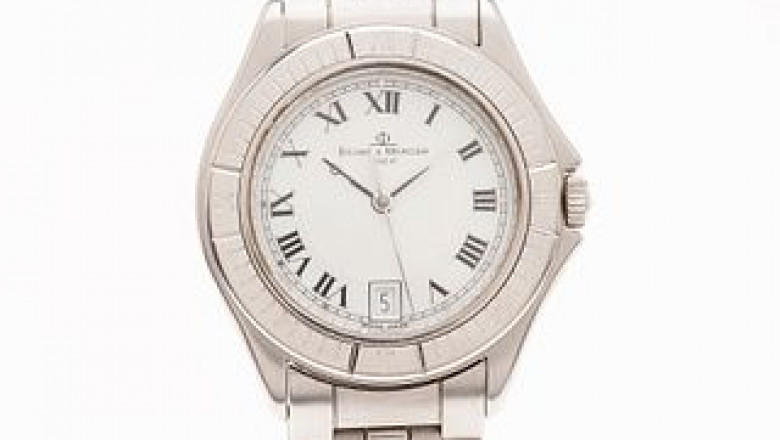views

The antique watch market appears to have been significantly impacted by the Internet in three ways: first, in terms of availability; second, in terms of price; and third, by providing parasites and con artists with a worldwide stage on which to practise their dishonesty.
SUPPLY
Before the advent of the internet, a collector's lot consisted of a somewhat nomadic pursuit of elusive timepieces, several trips to watch auctions and dealers, infrequent but encouraging "finds," and time frames of many years, or even lives, to amass sizable collections.
These days, an ever-changing market of thousands of watches on eBay alone has largely supplanted the legwork. The collector's perception of supply and experience has been completely altered, and timepieces that were formerly regarded to be uncommon or difficult to locate are now often available on a variety of online auction sites.
If your heart is ablaze and your bank account is deep, you may now create huge collections in less time. I wonder if this will also prematurely sate the collector's thirst for a lifetime of interest and acquisition, even though it may temporarily appease the irrepressible obsessions and urges of ardent collectors.
PRICE
The pricing has also been significantly impacted by the Internet. A small number of physical vintage watch merchants can no longer control pricing policies and monopolise specialised expertise. The drawback of this is that fewer individuals establish a connection with their retailer or watchmaker and opt to go it alone online. However, newcomers will find many helpful people ready to share their knowledge if they visit one of the more well-known brand or vintage forums.
While the on-line auction scene and specialist trading pages of watch forums started off as a platform for connecting wholesalers to retailers, it has 'matured' into marketplace where collectors source vintage watches from a pool of suppliers, becoming almost, but not completely, a retail market. Prices are, to a larger extent, determined globally these days.
Bloodsuckers travel abroad
A new demographic of customers for vintage timepieces has emerged as a result of the expansion of the Internet vintage watch industry through online auctions and cyber-dealerships. Wherever there are newcomers with money, the murky side of business inevitably comes to light.
The disapproval of shady and dishonest seller tactics has increased in online watch forums, along with a creeping fatalism articulated by seasoned users who lament that the villains and shonks of the horological cosmos will eventually drive out the good guys.
The phrase "Caveat Emptor" frequently appears in numerous posts on online forums. This is sometimes followed by harsh remarks like "difficult titties" and the suggestion that it may be a useful and beneficial experience for beginners to buy a lemon or be taken advantage of. The reasoning is that at least they leave with a little bit more experience.
However, putting too much emphasis on Caveat Emptor and not enough on condemning, name, and shame the bloodsuckers that prey on inexperienced and frequently passionate buyers sends the incorrect message. When we impose an excessive amount of responsibility on consumers, we are telling parasites and con artists that consumer ignorance is a form of crime in and of itself. That may lessen his or her dishonest and duplicitous actions, in the corrupt psyche of the typical Internet parasite.
It is more ethically acceptable for the shonks to enter a state of denial and avoid facing the full ramifications of their actions by blaming the innocent. It enables them to avoid introspection and coming to terms with the truth that they are selfish, harm others, and detract from the field of horology.
Keep in mind the following warnings if you're new to the game and wish to avoid falling prey to the horde of online parasites that are buzzing around hunting for fresh blood:
THE NEOPHYTES LIST OF ELECTRONIC VINTAGE WATCH AUCTION DOS AND DON'TS
• Make offers or purchases from merchants that guarantee to provide you with high-quality close-ups; cloudy, out-of-focus photographs may hide many sins. Those close-ups should be compared against pictures that you are certain depict the genuine object.
• Never purchase a watch from a seller who is unable or unwilling to show you close-ups of the dial, caseback, and movement.
• Make sure the serial, calibre, and caseback numbers match before placing your offer to verify you are bidding on a genuine watch.
• Never purchase a watch from a seller who is unable or unwilling to give pertinent serial and caseback numbers. How do you validate the legitimacy of anything if you don't have any numbers?
• Request the watch's service history. Assume that you will need to service the watch as soon as you receive it unless the vendor or dealer specifically states that it has already been serviced. Include that in your offer.
• You're in the wrong market if you want a vintage watch to appear and function like a brand-new one.
• A historic watch probably has undergone extensive refurbishment if it seems to be spanking new. ASK THE SELLER TO EXPLAIN WHAT WAS DONE IN DETAIL. Its value will be substantially harmed if it is not as specified.
• Never purchase a watch that has been listed for sale 24 hours a day. This is a favourite tactic of con artists who steal real images and create fake listings.
• Never purchase an antique timepiece from a Chinese vendor with little or no feedback. China is the source of more fake listings than all of Indonesia, Malaysia, and other Asian nations combined.
• Avoid vendors with minimal expertise in old timepieces unless you are absolutely certain you know what you're doing. Offer bids from sellers that have a proven track record of selling timepieces and outstanding reviews.
• Be extremely sceptical of terms like "mint," "minty," "new-old-stock," "brand new-in-box," "keeps excellent time," "like new," "never worn," etc. when describing vintage timepieces. Choose dealers instead that include precise condition reports in their ads and who describe the watch in simple terms.
• Look for any ambiguities in the lists. Choose the interpretation of the description that has the most negative connotations if there are several possible ones.
• Ask the supplier several questions. Any queries should be answered before putting a bid. Good suppliers welcome questions and give comprehensive responses. Shonks despise restrictions, thus they tend to be reserved in their reactions.
• Avoid working with suppliers that make "private" comments or who opt for private bidding. Some sellers do this to prevent dishonest offers of a second chance from being sent to unsuccessful bidders, but it also makes it simpler for sellers to organise shill bidding, in which they register on online auction sites under a different name and bid against legitimate bidders to artificially inflate the price of the watch.












